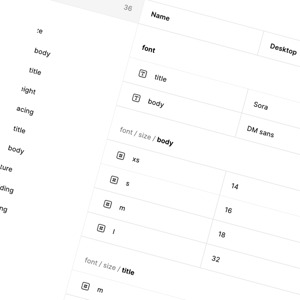Rather than deploying AI and hoping for the best, leaders must ensure solutions are measurable and serve need.
Enterprises are moving quickly to embed AI across all their customer-facing operations. The problem is, they may be moving too quickly. In many programmes, progress is outpacing the fundamentals of measurement and analysis.
Rather than deploying AI and hoping for the best, leaders must confirm that each solution serves customer needs and measurably improves experience. If it does not, effort and spend are being wasted.
This article examines common failure modes for customer-facing enterprise AI and looks at how to measure whether AI is actually improving customer experience.
AI as a sticking plaster
A common issue regarding the deployment of AI is that the technology is treated as a sticking plaster for customer experience problems.
The enterprise essentially uses artificial intelligence solutions to cover up a problem at a superficial level without actually remedying any of the underlying issues.
A prime example is AI in customer service. Many organisations cannot staff round-the-clock coverage across time zones, so AI is introduced to extend availability.
This AI is typically deployed in the form of a customer service chatbot. The organisation deploys this bot on a 24/7 basis, and they make sure that all customers can access support, wherever they are and whatever time of day it is.
The issue arises when the chatbot fails to resolve the user's issue. The organisation optimises for availability rather than outcomes, and customers are left dissatisfied.
Underusing AI
Many organisations see some benefit, but they are not getting full value because measurement is incomplete.
In the case of customer service, the organisation may not be measuring the right metrics. For instance, leaders often track handovers to human agents after an interaction with a customer service bot. If the handover rate is low, this might suggest a positive user experience, but it may be masking other issues. Cart abandonment or silent churn after a poor experience may also lead to a low handover rate.
This is why leaders need to adopt a more sophisticated approach to measurement. By pairing containment with satisfaction and recontact rates, they get a broader and more reliable picture of the customer experience.
AI should be monitored with clear objectives in mind and placed deliberately within the customer journey. The question is not only whether the AI solution works, but whether the solution is actively improving the end-to-end experience.
Monitoring AI's impact on the customer experience

Use a mixture of qualitative research, hands-on testing, and quantitative metrics to build your AI monitoring foundation. This provides the solid basis enterprise leaders need to understand how users are interacting with customer-facing AI solutions.
The work continues
An excellent way to assess the AI customer experience is to reach out directly and find out what your customers think. Where possible, run interviews with your users and intercept surveys that gather verbatim feedback following a real interaction with your AI solution. Ensure that your questions remain task-based to provide a practical understanding of the solution's operation.
Avoid any leading questions or prompts when you interview your users. Aim to make sure the answers you receive reflect the genuine experience.
To gain data on a more systematic level, embed one-click Customer Satisfaction Score (CSAT) or Customer Effort Score (CES) in the flow and tag transcripts with outcome labels. Combining survey signals with analytics can help you to broaden the value of the feedback, identifying failure modes and improvement opportunities.
Hands-on testing and journey mapping
Hands-on testing and journey mapping give you a firsthand understanding of what the end user is experiencing. To do this, run scenario-based tests against mapped journeys with clear success criteria. Observe how the tool supports each step and whether customers complete the task without assistance.
Aim to keep the steps your user must move through on their journey to a minimum. For simple lookups or recommendations, aim for two to three inputs from entry to answer. For complex support needs, make escalation to a human fast and obvious.
Be sure to balance your internal testing with independent research to reduce the risk of bias and to validate your findings.
Measuring the right quantitative metrics
Even with qualitative assessment and direct testing, your quantitative metrics still form the backbone of your monitoring. So you need to make sure you’re monitoring the right ones.
The following metrics can help you understand different aspects of the customer journey:
- Customer Effort Score (CES) is useful for assessing the friction a user experiences when completing a task.
- Time to Resolution (TTR) or Mean Time to Resolution (MTTR) are valuable metrics for understanding the speed at which a task is completed.
- First Contact Resolution (FCR), abandonment and recontact rates, containment with satisfaction, and transfer-to-agent rate will help you gain more insight. Cross-reference these metrics against one another to gain a clearer picture.
- Net Promoter Score (NPS) and Customer Satisfaction (CSAT) are valuable outcome signals, but they must be linked to specific user journeys. This way, you can attribute changes to AI with confidence.
How’s your AI-readiness looking?
Ensuring AI supports customer experience is just the beginning. Treat this as an ongoing cycle of measurement and improvement.
To make sure you’re moving in the right direction, reach out to our team today and get your AI-readiness report.























